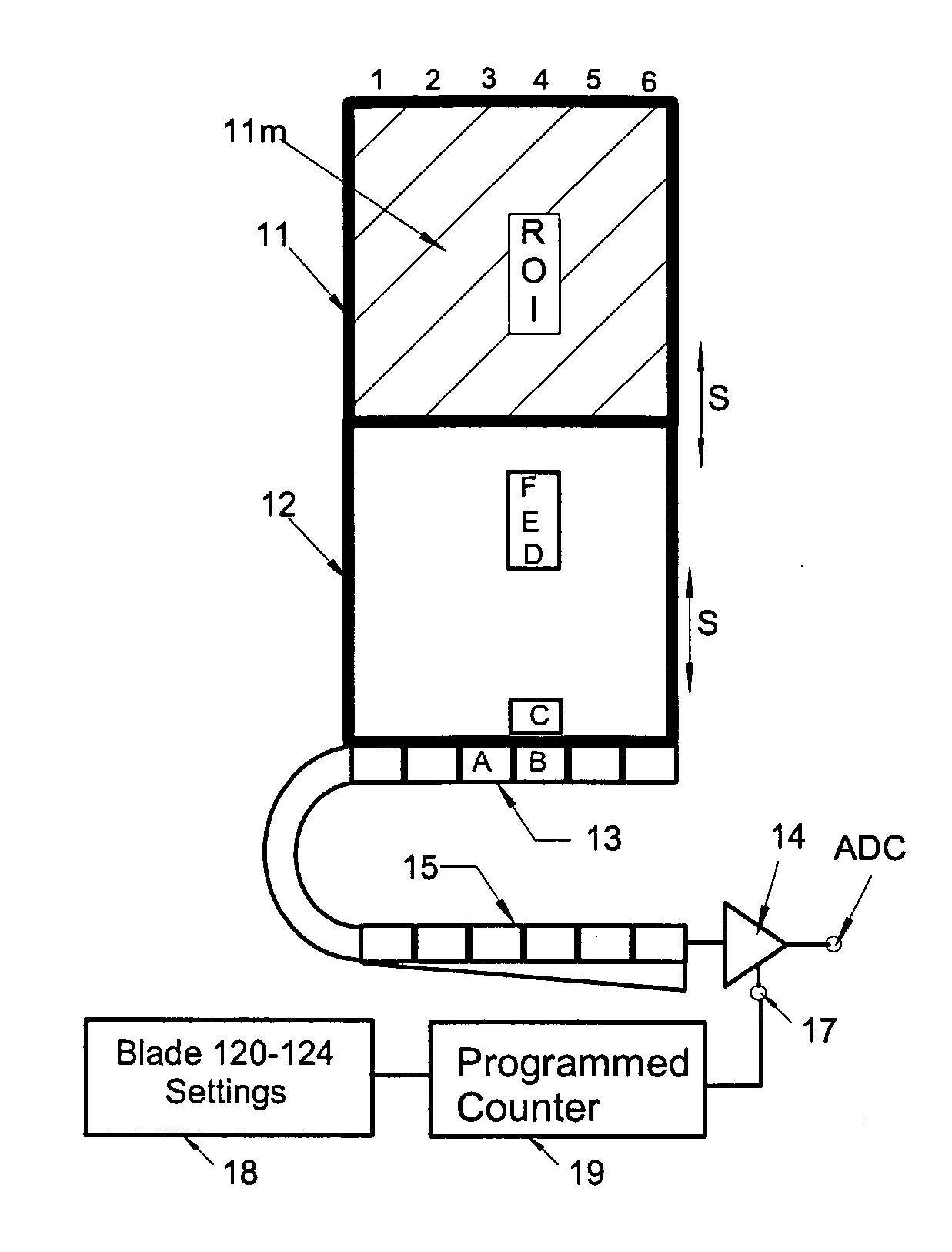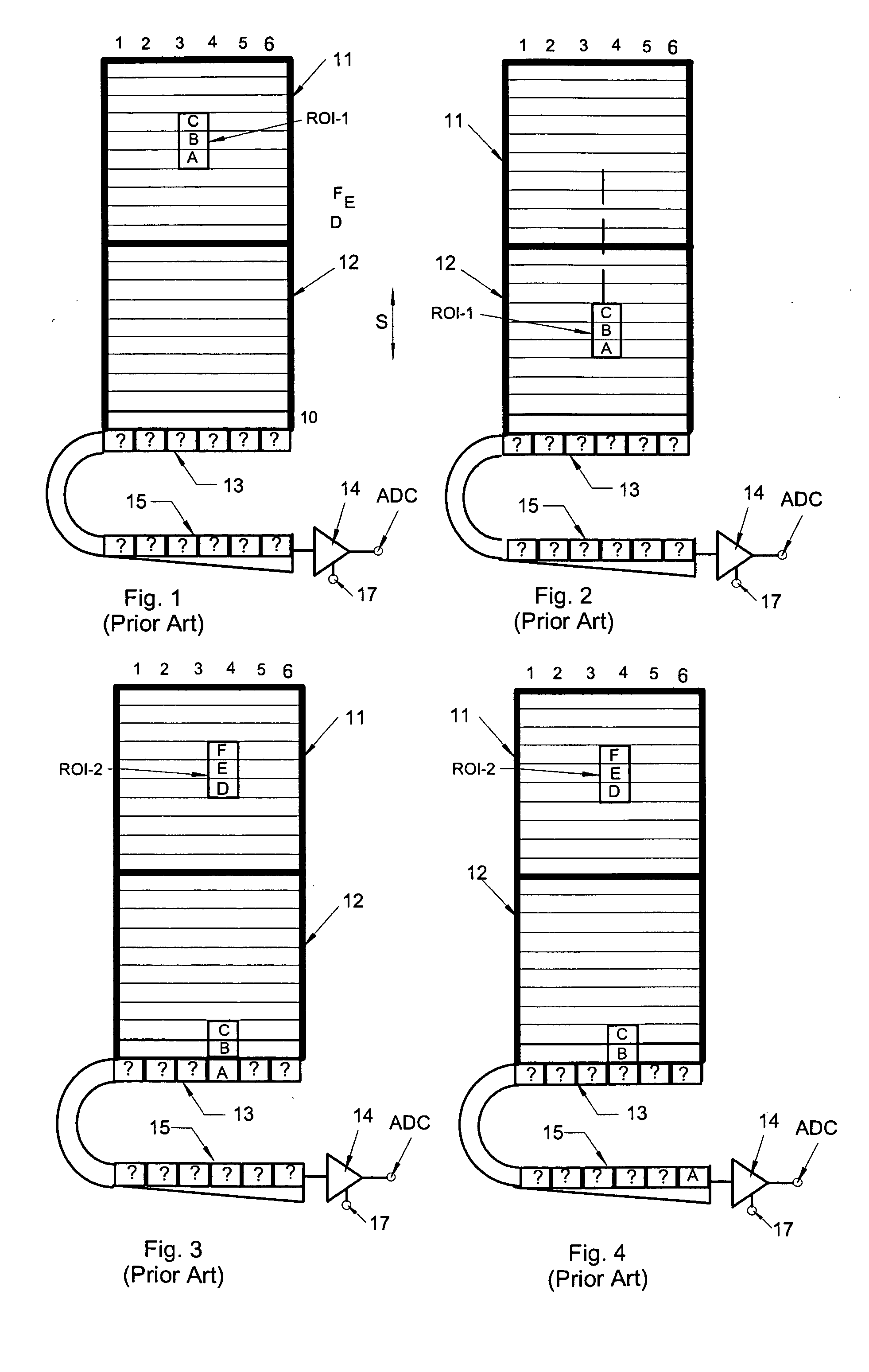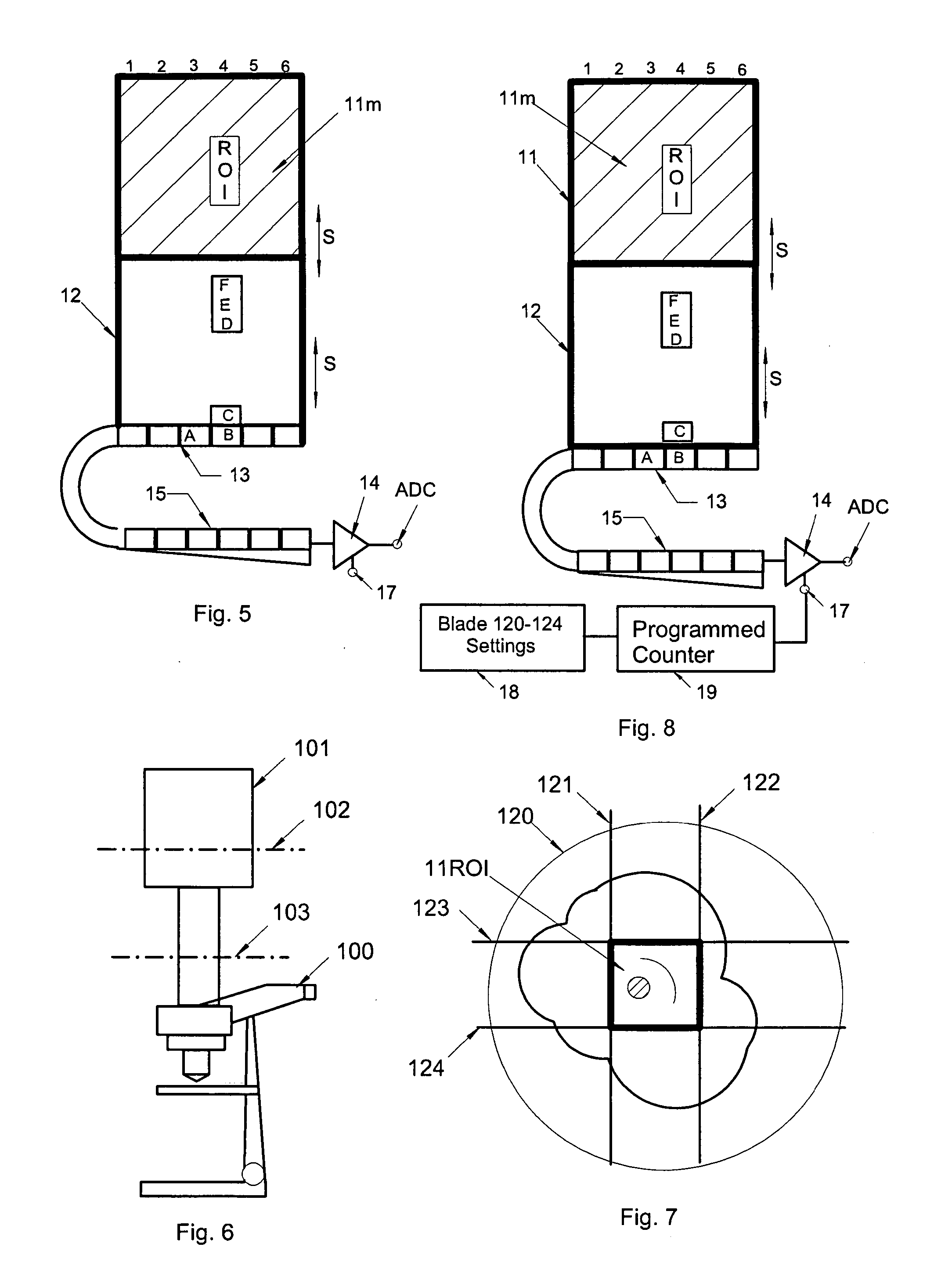High-speed frame transfer of sub-frame area
a high-speed frame transfer and sub-frame technology, applied in the field of charge coupled devices, can solve the problems of limited high-speed readout of a standard ccd camera, slowing down the pace at which successive images can be acquired and digitized, and not being practical to have different size ccds to accommodate, etc., to achieve the effect of increasing the frame readout ra
- Summary
- Abstract
- Description
- Claims
- Application Information
AI Technical Summary
Benefits of technology
Problems solved by technology
Method used
Image
Examples
Embodiment Construction
[0016] Referring now to FIG. 1, as mentioned above, a conventional frame transfer CCD has an upper portion 11 that can be exposed to light from an object and a lower or storage portion 12 that is shielded from light. After a suitable exposure time is completed, the charges accumulating on the rows of polysilicon pixels in upper portion 11 are shifted down the parallel columns 1-6 into the shielded storage area 12, as shown in FIG. 2. Let it be assumed that all one is interested in is the region of interest ROI-1 comprising pixel rows A, B, C. Nevertheless, each row of pixels ahead of rows A, B, C must be shifted down the length of storage region 12 before the pixels of the next row can be entered into register 13. The same applies to row A of the region of interest which, as shown in FIGS. 3 and 4 must also be shifted along the entire length of serial output register 13 before the pixels of row B can be entered.
[0017] Once all of the rows of the image region ROI-1 have been shifted...
PUM
 Login to View More
Login to View More Abstract
Description
Claims
Application Information
 Login to View More
Login to View More - R&D
- Intellectual Property
- Life Sciences
- Materials
- Tech Scout
- Unparalleled Data Quality
- Higher Quality Content
- 60% Fewer Hallucinations
Browse by: Latest US Patents, China's latest patents, Technical Efficacy Thesaurus, Application Domain, Technology Topic, Popular Technical Reports.
© 2025 PatSnap. All rights reserved.Legal|Privacy policy|Modern Slavery Act Transparency Statement|Sitemap|About US| Contact US: help@patsnap.com



